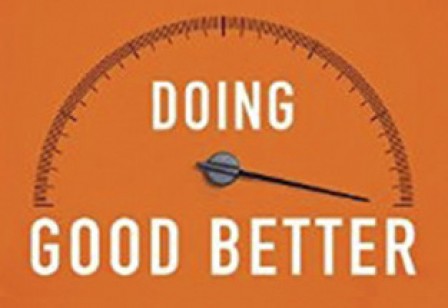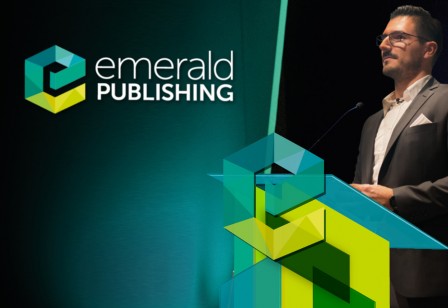Re-Kindling the Journal’s Publisher Brand - Bo Sacks
As featured by Bo Sacks, written by Max du Bois
Publishers around the globe are re-inventing themselves. Like most well established sectors, they have had to make often arduous transitions or risk annihilation. The combination of increased competition in the form of consolidations balanced at the other end of the spectrum by nimble pop up publishers and digital disruption, has resulted in publishers having to re-address their priorities.
If they are to readily attract authors, reviewers and users they now need to focus on becoming purpose led organizations. The time has come for them to step up and tell a story that is larger than any journal's individual impact factors and draw on wider brand strengths to help promote their individual values.
It only seems like yesterday that the journals were all important, towering above the publisher brand, and pushing it into irrelevance and obscurity.
A mere decade ago the publisher's key role was that of facilitator, watching the action from the rear. Those who still cling to this model have become a sad collection of unlinked and incoherent portfolios.
Shedding the old model
This is something Emerald Publishing Group feared was happening to them in late 2016, as they realized that their relevance and meaning had become blurred. They needed to retrieve their center of gravity.
With a growing portfolio of over 300 journals, some 2,500 books and over 1,500 case studies, Emerald Publishing Group have been connecting research, education and professional learning for 50 years.
They acknowledged they had clear strengths that needed to be emphasized. These were defined as being independent and principled, with a niche subject focus, a diverse product portfolio and a supportive attitude towards their multiple users. Re-asserting their brand required weaving these elements into their overarching holistic and strategic approach.
This kind of soul-searching meant asking themselves what lasting impression they wanted to create - the answer was both simple yet impactful. For half a century Emerald had nurtured fresh thinking and focused on showcasing insights that delivered tangible impact. They wanted to be known for bringing research to life, for bridging the gap that all too often separated theory from reality.
The new role of the publisher brand
Whilst Emerald Publishing's strategy was driven by ensuring the value of their brand positively impacted the individual publications, all too often fragmented internal structures appear to be a key barrier across many organizations. This is particularly evident when the variety of different journals follows their own marketing and communication agendas.
This is well demonstrated by TES, formally known as The Times Educational Supplement. As a catalyst for educational change, an important forum for teaching discussion, a source of educational intelligence as well as a key partner to train, develop and empower teachers, TES needed to pull their fragmented offerings together without losing the value of each in the ensuing chaos.
By defining TES' most influential audiences we were able to help evolve their brand behavior to create strong internal advocacy groups to bring the brand to life across all touch-points. This in turn contributed to an ongoing change management programme informed by research.
This required a strong cohesive umbrella brand to capture engagement opportunities. It also meant defining TES' place within education, guiding the organization along its evolutionary journey and, eventually, setting the framework that communicates an evolving TES. The end result is a community-guided, customer-focused, and digitally-advanced partner for all in teaching.
Meaningfully connecting
There is no doubt that the most effective publishers are going to be those who understand and deliver a relationship between perception, values and delivery. In some cases this can mean learning to embrace complexity, something The Royal Society of Chemistry discovered as they rebranded.
With 175 years of history, spanning 6 global territories and 3 separate businesses, one could be forgiven for thinking The Royal Society of Chemistry would have sufficient clout and heritage to make it a global brand.
Yet according to research people used and valued their products but often had no idea where they came from. Individually highly successful brands stood in a fragmented vacuum, starving the Royal Society of Chemistry of visibility.
Their re-brand was inspired by their international community of scientists and the dynamic creativity of chemistry. By putting them at the very centre of their story they overturned the existing misperceptions of a 'fusty dusty' society while using the prestige of their heritage and full name to attract new audiences in the UK, Asia and the Americas.
Their vision was to connect the world with chemical sciences and establish the core organization as the world's leading chemistry community' and the focus of the organization as 'advancing excellence' in the chemical sciences.
This shift in emphasis of the RSC's entire marketing campaign resulted in membership increase from 48k to 53k, harnessed the power of its independent specialist groups (in one case increasing users from 3000 to 20,000 members) and created a platform for its publishing to mushroom by 400% over five years.
Future proofing
A publisher needs to be able to describe their relationship with their various audiences; otherwise their brand will be out of step with the way they are viewed. The Biochemical Society's subsidiary publisher, Portland Press found this out as they struggled to embrace changes in the landscape where collaboration is vital and the lines between academia and industry were blurring.
In this case deriving coherence out of chaos required The Biochemical Society's new brand to carve out its place as the hub of the biosciences community, championing their value and relevance and opening up biochemistry for the next generation. This allowed them to leverage themselves as 'the home of the biochemical community'.
Portland Press' role focused on the dissemination of knowledge and the competitively unique reinvestment of their profits into advancing the life sciences.
Publisher brands that project purpose and link their portfolio will more readily amplify their strengths in a distinctive and relevant way. In so doing they will benefit from the powerful commercial shift as they become far greater than the sum of their parts.
This enabled them to punch above their weight, launch new products more easily and diversify into new areas...it really is that simple.
A powerful central brand allows the collective strength of the portfolio to be gathered, and this has a number of positive effects.
From spreading the value of top and niche performers across the less strong and encouraging cross selling, new journal launches and a wider dissemination from expansion into parallel sectors to events.
Focusing on being a purpose led organization offers publishers greater opportunities to accelerate growth throughout the entire group.
This constant imperative to demonstrate and deliver value has become crucial for publishers, who must play a central role in supporting their portfolio of publications, without however getting in the way of any individual journal.
With the 'Impact Factors' under increasing criticism, leveraging brand strategy so as to emblomise brand assets and touch-points is a fundamental battleground these days if publishers wish to remain relevant.








